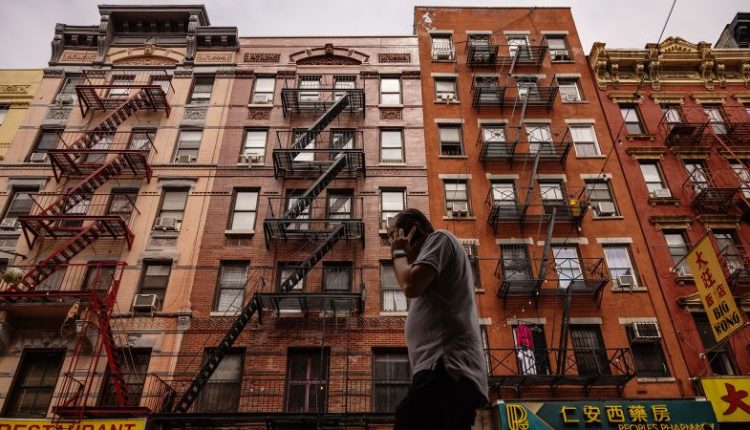With the Federal Reserve all but confirmed to cut interest rates next month, there is finally some light at the end of the tunnel for Americans grappling with the most unaffordable housing market in decades. But the old saying that “real estate is local” still rings painfully true.
In June, home-price growth accelerated the most in New York, San Diego and Las Vegas, according to the latest S&P CoreLogic Case-Shiller 20-City Home Price Index released Tuesday. For several months, San Diego led with the fastest increase in home prices, eventually getting toppled by New York in May — a corner of the country already notorious for its high cost of living.
And it’s not just home buyers feeling the sting: A recent report from Moody’s Analytics showed that the situation is dire for renters, too. New York City, Miami and Fort Lauderdale in Florida, Los Angeles and Northern New Jersey were the five most rent-burdened places in America during the second quarter, the report found, based on rent prices and family incomes (or the rent-to-income ratio.) Renters in those cities allocate more than 30% of their income toward rent, Moody’s said.
That’s in contrast to regions seeing declining shelter costs, such as Tampa, Florida; Denver and Minneapolis, according to Consumer Price Index data. A pickup in home construction has been key for those metropolitan areas because it can ease upward pressure on prices. An influx of new residents drove up housing costs in the Tampa Bay region, leaving it with one of the highest annual inflation rates in the country last year. Now, the Tampa metro has one of the lowest rates, mostly thanks to beefed-up housing supply.
Nationwide, the housing market has finally shown signs of improvement. Year-over-year home-price growth has slowed over the past several months, as measured by the national Case-Shiller index, rising 5.4% in June from a year earlier, down from 5.9% in May, though the index itself reached a fresh record high that month. The average 30-year mortgage rate is currently at its lowest level since May 2023, housing inventory has expanded every month this year so far, and household incomes have continued to grow at a brisk pace, which is factored in to housing affordability,
Affordability is being stymied for different reasons across different places, but the one region currently taking the crown as America’s most unaffordable housing market seems to be New York.
The Big Apple is the most rent burdened place in the US by far, according to the Moody’s report, where renters dedicated about 58% of their income toward rent during the second quarter. Nationally, that figure stood at about 27% in the April-through-June period. The New York-Newark-Jersey City metro had one of the nation’s highest annual inflation rates in July, with the month-over-month increase “primarily driven by higher prices for shelter,” the Labor Department’s Regional Commissioner William J. Sibley said in a release.
“It’s heartbreaking when I look at the data for New York,” said Lu Chen, senior economist at Moody’s who was the lead author of the group’s report. “There is just no way that many families, depending on the household structure, can afford to live in any unit without sharing.”
The median rent in Manhattan, home to Times Square and New York’s iconic skyscrapers, was $4,300 in July, according to a report from brokerage firm Douglas Elliman and Miller Samuel Real Estate Appraisers and Consultants. In Brooklyn, the median rent in July was $3,600; and in northwest Queens, it was $3,450 that month, the report said. The median national rent for all bedrooms and property types is $2,106, according to Zillow.
Home-price growth in New York was the nation’s fastest, rising 9% in June from a year earlier, according to Case-Shiller data.
Regions that have seen strong population growth in recent years, particularly many cities in the Sun Belt, have seen housing costs climb. From Miami to Atlanta and Phoenix, an influx of new residents in many American cities — either because folks were seeking warmer weather or a lower cost of living — has driven up demand, including for housing. Initially, that resulted in some growing pains: The shelter indexes for the Miami, Atlanta, Phoenix and Tampa metros areas each reached a record high in 2022, CPI data shows.
But nearly all of those metros have now reversed course: Inflation in Atlanta, Tampa and Phoenix has plummeted over the past year, thanks to slowing housing costs. The one exception is Miami, standing in contrast to its counterpart across the state.
“Tampa is a fast-growing area and there’s significant building going on because we have a lot of available land in surrounding areas like Hillsborough County and Pasco County,” Brian Adcock, chair of the Tampa Bay Chamber, told CNN previously. “There are a lot more neighborhoods now and that’s the key difference with Miami.”
Miami was the second-most rent-burdened place in America, Moody’s reported, with renters dishing out about 37% of their income for rent. The CPI shelter index for the metropolitan area registered at a 5.8% annual rate in June, according to the latest data, compared to the 5.1% rate seen nationally in July.
Read the full article here

